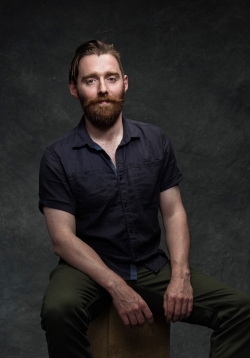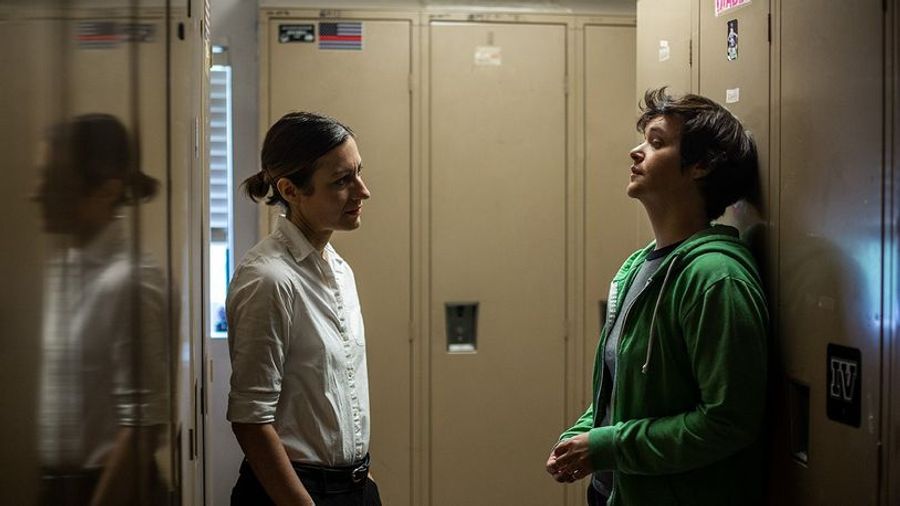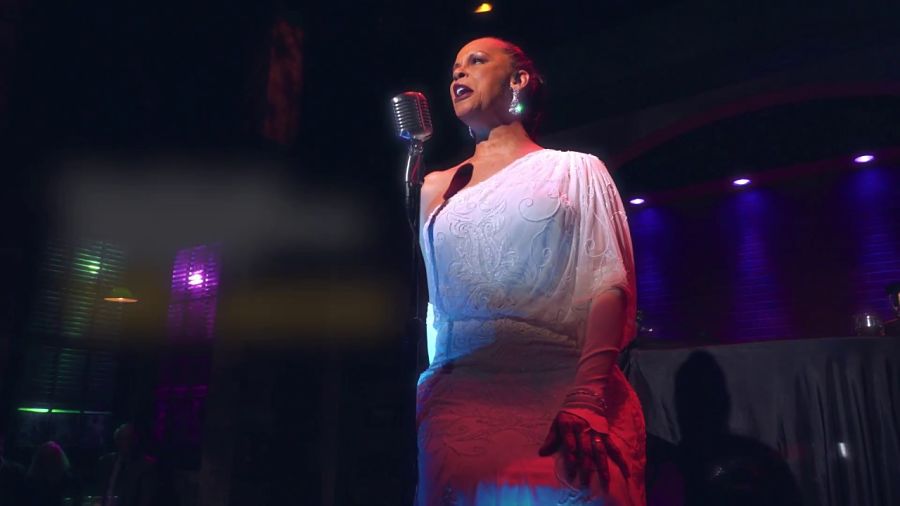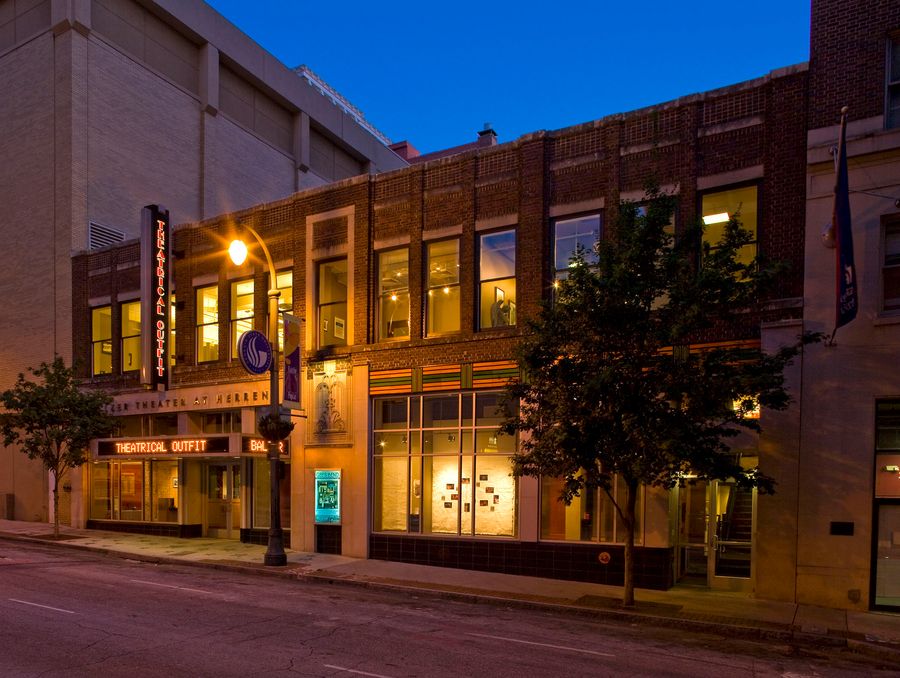ATLANTA: Local audiences craving concerts and dance performances might find their way to Georgia State University’s Rialto Center for the Arts in Downtown Atlanta, near the Peachtree Center MARTA stop. But if they walk due east from that former movie palace, they’ll be at the Balzer Theater at Herren’s, a 200-seat venue in a building that once housed a historic Atlanta restaurant and is now the home of Theatrical Outfit. This 45-year-old company, the second oldest nonprofit professional theatre in Atlanta, started out as an ensemble and has since grown into a multifaceted institution, though its core is still developing and producing new work with a local focus. We recently caught up with its newish leader about the theatre and its programming.
AMERICAN THEATRE: Who founded Theatrical Outfit, when, and why?
MATT TORNEY: Theatrical Outfit was founded by an ensemble of young artists and friends in 1977 in a converted laundromat. They wanted to bring contemporary, cutting-edge theatre to Atlanta and create opportunities for the exciting community of artists living in the city at the time.

Tell us about yourself and your connection to the company.
I am the artistic director of Theatrical Outfit. I started near the beginning of the pandemic, in July 2020, so it has been an incredibly challenging yet incredibly rewarding couple of years so far. I am originally from Belfast in Northern Ireland and have been working in the U.S. since 2009. This is my first time living in the American South, and I am amazed at both how complex and misunderstood the region is. It’s an exciting place to make theatre.
What sets your theatre apart from others in your region?
Our mission is to produce theatre “that starts conversations that matter,” and our programming reflects just that. We look for plays that tap into crucial conversations for audiences and artists in Atlanta, and we define that differently based on what is going on in our world. Another aspect of our work is our deep commitment to Atlanta-based artists, which has remained unchanged since the theatre’s inception. One of our most exciting programs recently is the launch of the “Made in Atlanta” new-play development program, which includes readings, workshops, productions, commissions, and residencies. We are offering Theatrical Outfit as a home for artists right in the heart of our city.
Tell us about your favorite theatre institution other than your own, and why you admire it.
That would have to be Steppenwolf Theatre in Chicago. The depth of their connection to the Chicago community and the way in which they empower artists to play such a vital role in their programming and creative work is a model for us at Theatrical Outfit.
How do you pick the plays you put on your stage?
Our wonderful associate artistic director, Addae Moon, and I are always looking for exciting new plays. We cast a wide net, starting with “Made in Atlanta,” and then look at what’s happening in other cities and countries. We work with the rest of the TO staff to identify what the “conversations that matter” are for Atlanta, then Addae and I develop a long list of plays that resonate with those ideas.
What’s your annual budget, and how many artists do you employ each season?
Our annual budget is $1.5 million, and we employ on average 150 artists a year.
How did your theatre adapt to the past 2 years of COVID-19, and what does the prognosis look like?
My first task when I took over as artistic director was to cancel all in-person programming for the rest of the year. Like every performing arts organization in the country, we were immediately launched into “adapt and survive” mode. We developed the Downtown Dialogues digital reading series, in which we paired plays that spoke urgently to the moment with panel discussions that connected artists and experts to dig into the meat of the plays from multiple angles. We moved our new-play festival online, and programmed three digital productions, including an amazing live stream of Fires in the Mirror: Crown Heights, Brooklyn, and Other Identities by Anna Deavere Smith that will now have a live showing at Theatre J in DC in June.
We took every opportunity we had to pay artists and kept looking for innovative new ways to serve our mission—including the launch of a new program called “The Welcome Table” aimed at raising money for organizations that serve folks experiencing homelessness in Downtown Atlanta.

How has your theatre responded to calls for racial justice and more equitable working conditions put forward in documents like We See You, White American Theater, among others?
As a theatre situated in the heart of Downtown Atlanta, the calls for racial equity are especially urgent for us. One of the first things I experienced as a new artistic director was a listening session with BIPOC artists in Atlanta, who courageously shared their experiences in Atlanta theatre—stories of ways in which they had been othered and harmed, and ways in which the systems here has failed them. It struck me deeply and gave great urgency to our internal work at Theatrical Outfit.
Our new governing principle is that the work on our stages must look and feel like the city in which we live, and that having good language is not enough—success will be measured by the experiences of artists working in our building, all of whom need to feel seen, heard, and valued. This begins with programming and hiring, but also required us to begin the process of shifting how we think about our work, our culture, and how we support artists while they are working here. Our first concrete action was to join the call for the five-day work week and eliminate 10 out of 12s.
We also made a number of organizational commitments with the full support of the board, including quarterly training (including some amazing sessions with the Center for Civil and Human Rights, which I highly recommend), changes to our hiring practices, board development goals, and internal assessments. We are at the beginning of a long and humbling journey, but we have started, and it has had a powerful impact on our theatre and our audience already.

What show are you working on now? Anything else in your season that you’re especially looking forward to?
We are just about to go into tech for our final show of the 21-22 season, a revival of our hit production of Lady Day at Emerson’s Bar and Grill with Broadway and Atlanta star Terry Burrell’s inspired vision of Billie Holiday. There is something about Billie’s music, and the way that she weaves her pain and struggle into melancholy beauty, that just resonates so powerfully with what we have lived through. From there we launch into the 22-23 season, which will include four mainstage shows, expanded new work and community outreach, and a full lobby renovation to better engage our community.
Strangest or funniest thing you’ve ever seen (or put) on your stage?
Our marketing director, Ryan Oliveti, told me after our production of An Iliad had closed that he had hid his Elsa figurine (from Frozen) on the set. Apparentl she has visited other sets as well, so keep your eyes peeled if you see a show at TO!
What are you doing when you’re not doing theatre?
Looking after my one-month-old son (welcome to the world, Fionn Benjamin Torney!) and three-year-old daughter Isla Torney.
What does theatre—not just your theatre, but the American or world theatre—look like in, say, 20 years?
To me, the most powerful element of theatre is the raw creativity of artists and the catalytic magic that happens during a live performance. I think that we are in for a period of very necessary change in how we make theatre, how institutions operate, and how we articulate our values. But the core vitality of our artform will continue to evolve to reflect the changing times—whatever they look like. When I look at the ways different theatres have responded to both COVID-19 and calls for racial equity, I am struck by the number of innovators that are breaking things open, letting things go, and creating new opportunities for people that have been excluded. This energy is catalytic and transformative, and, if we trust in artists, they will show us the way.
Creative credits for production photos: Safety Net at Theatrical Outfit, written by Daryl Lisa Fazio, directed by Karen Robinson, scenic designer: Stephanie Polhemus , costume designer: Becca Long, lighting designer: Mike Post, sound designer: Jeff Millsaps, properties designer: Janhavi Shivalkar
Lady Day at Emerson’s Bar and Grill at Theatrical Outfit, written by Lanie Robertson, directed by Eric J. Little, music direction: Tyrone Jackson, scenic designers: Moriah & Isabel Curley-Clay, costume designer: Jeff Cone, lighting designer: Rob Dillard, properties designer & scenic decorator: Caroline Cook


